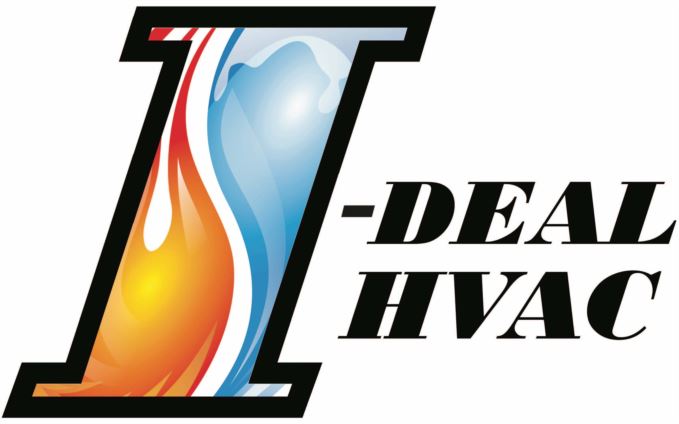
You shouldn’t have to give up comfort or drain your wallet to keep your residence at the right temp during the summer.
But what is the ideal temperature, exactly? We go over suggestions from energy professionals so you can find the best temperature for your loved ones.
Here’s what we recommend for the most energy-efficient setting for air conditioning in Albuquerque.
Recommended Thermostat Settings for Summer
Most people find using the thermostat at 72-73 degrees provides ideal comfort. However, if there’s a sizeable difference between your inside and outdoor temperatures, your electricity costs will be higher.
These are our suggestions based on the U.S. Department of Energy (DOE) and ENERGY STAR®.
While at home: 78 degrees. While that sounds too high, there are approaches you can keep your home pleasant without having the air conditioner running frequently.
Keeping windows and curtains shut during the day keeps cool air where it needs to be—inside. Some window treatments, including honeycomb shades or plantation shutters, are made to provide more insulation and improved energy conservation.
If you have ceiling fans in your house, the DOE says you can increase thermostat settings about 4 degrees warmer without giving up comfort. That’s because they refresh with a windchill effect. Because they cool people, not spaces, shut them off when you move from a room.
If 78 degrees still appears too hot on the surface, try running a trial for a week or so. Get started by upping your setting to 78 degrees while you’re at your house. Then, progressively lower it while adhering to the suggestions above. You may be astonished at how comfortable you feel at a warmer temperature setting.
While away: 88 degrees. There’s no need to keep the AC working all day while your residence is vacant. Turning the temperature 7–10 degrees higher can save you anywhere from 5–15% on your AC costs, according to the DOE.
When you come home, don’t be tempted to switch your thermostat under 78 to cool your home more quickly. This isn’t productive and typically leads to a more expensive AC cost.
A programmable thermostat is a useful approach to keep your temp controlled, but it requires setting programs. If you don’t use programs, you might forget to move the set temperature when you go.
If you want a hassle-free resolution, think about getting a smart thermostat. This thermostat connects with your phone, so it is aware when you’re at home and when you’re gone. Then it instinctively adjusts temperature settings for maximum savings. How much exactly? About $180 yearly on heating and cooling, according to ENERGY STAR.
Another plus of getting a smart thermostat? You can use your phone to keep an eye on and adjust temperature settings from almost anywhere.
While sleeping: Around 70 degrees. While ENERGY STAR recommends 82 degrees, that might be unpleasant for many families. Most people sleep better when their sleeping area is chilled, so that’s why the National Sleep Foundation advises 60–67 degrees. But that could be too cool, depending on your clothing and blanket preference.
We advise running a similar test over a week, putting your temperature higher and slowly turning it down to pick the right setting for your residence. On mild nights, you might find keeping windows open at night and relying on a ceiling fan is a better idea than using the AC.
More Approaches to Save Energy During Warm Weather
There are added ways you can conserve money on AC bills throughout warm weather.
- Install an energy-efficient air conditioning system. Central air conditioners only are effective for about 12–15 years and lose efficiency as they age. An upgraded air conditioner can keep your house more comfortable while keeping AC costs small.
- Set annual air conditioner service. Annual air conditioner maintenance keeps your equipment working smoothly and may help it run at greater efficiency. It may also help prolong its life expectancy, since it helps pros to pinpoint seemingly insignificant problems before they cause a major meltdown.
- Switch air filters often. Use manufacturer instructions for replacing your air filter. A dirty filter can cause your system to short cycle, or run too often, and raise your energy.
- Check attic insulation levels. Nearly 90% of houses in the United States don’t have proper insulation, according to the Insulation Institute. The majority of southern climates require 13–14” of attic insulation, while northern climates require 16–18”.
- Have your ductwork checked. Ductwork that has separated over time can leak cool air into your attic, walls or crawl space. This can create major comfort troubles in your house, like hot and cold spots.
- Seal openings, doors and windows. Keep humid air where it belongs by sealing openings. You can also caulk or weather strip doors to seal more cool air inside.
Save More Energy During Hot Weather with I-Deal HVAC
If you want to conserve more energy during hot weather, our I-Deal HVAC professionals can assist you. Get in touch with us at 505-445-1250 or contact us online for extra info about our energy-saving cooling solutions.
